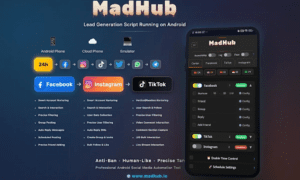Introduction
Businesses are constantly looking for methods to optimize their infrastructure and streamline operations in today’s rapidly changing technology landscape. Terraform is one technology that has grown significantly in popularity in recent years. An open-source infrastructure as code (IaC) application called Terraform enables businesses to declaratively define and manage their infrastructure. Businesses may improve the efficiency, scalability, agility, and security of their infrastructure management by utilizing Terraform services. The advantages and best practices of using Terraform services to optimize your infrastructure are examined in this article.
Infrastructure as Code (IaC) with Terraform
Manual configuration is a part of traditional infrastructure management, and it may be time-consuming, prone to mistakes, and challenging to scale. The way Terraform treats infrastructure as code is a paradigm shift. With Terraform, infrastructure is specified using a declarative language, enabling you to easily and human-readably describe the desired state of your infrastructure resources. You can version, review, and collaborate on infrastructure changes just like any other software project by codifying infrastructure.
Greater Efficiency and Consistency
You can define your infrastructure as reusable modules using Terraform. The configuration and provisioning logic for particular infrastructure components is contained in these modules. You can assure consistency in your infrastructure setup and minimize duplication of effort by reusing modules across various projects. The provisioning and deployment of resources can also be automated with Terraform, negating the need for manual intervention. Greater operational efficiency results from this automation because it saves time and lowers the possibility of human error.
Scalability and Flexibility
Your infrastructure will expand as your firm expands. Scaling your infrastructure becomes simpler and more controllable with Terraform. Due to Terraform’s modular design, you can add or delete resources gradually as needed without affecting the infrastructure as a whole. Based on the actual demand, resources can be dynamically provisioned, ensuring efficient resource use and low costs. You can take advantage of the scalability and flexibility provided by systems like Amazon Web Services (AWS), Microsoft Azure, and Google Cloud Platform (GCP) by integrating Terraform smoothly with a variety of cloud providers.
Infrastructure Lifecycle Management
You can control the whole lifecycle of your infrastructure resources with Terraform’s potent lifecycle management feature. By integrating Terraform’s command-line interface (CLI) with continuous integration and continuous deployment (CI/CD) pipelines, you can quickly create, update, and destroy resources. By doing this, you can be sure that your infrastructure is always using the most recent configurations and modifications. Additionally, Terraform’s state management tool keeps track of the condition of your infrastructure at any given time, making it simpler to handle intricate dependencies and carry out upgrades.
Collaboration and version
Terraform promotes collaboration and enables effective version control for infrastructure programming. Multiple team members can define and administer the infrastructure, fostering better communication and cooperation. A version control system, like Git, can be used to store the code and provide versioning, code review, and rollback features. This reduces the risks connected with manual infrastructure management by making sure that modifications are thoroughly recorded, auditable, and reversible.
Security and Compliance
Compliance and infrastructure security are essential components of every organization’s operations. Terraform’s ability to define security configurations and policies allows you to enforce security best practices. To ensure consistency and adherence to security standards, you can define security groups, access controls, and encryption settings as part of your infrastructure code. It is also made simpler to evaluate and maintain the security posture of your infrastructure thanks to Terraform’s support for integration with security audits and compliance solutions.
Cost Optimization
Businesses can reduce their infrastructure expenditures by using Terraform. You can cut expenses associated with unused resources by dynamically providing and de-provisioning resources based on demand. By integrating Terraform with cloud providers, you can use cost-optimization tools like autoscaling, reserved instances, and spot instances, ensuring effective resource management and cost control.
Conclusion
Using Terraform services to optimize your infrastructure has many benefits, including increased productivity, scalability, flexibility, security, and cost reduction. Businesses can achieve quicker provisioning, consistent deployments, and lower operational costs by adopting an infrastructure-as-code approach. Organizations can effectively manage their infrastructure at scale because of Terraform’s modular design, lifecycle management capabilities, collaboration features, and connection with version control systems. Leveraging Terraform services can be a game-changer in helping organizations optimize their infrastructure, increase operational effectiveness, and spur company growth as they try to remain ahead of the competition.





























